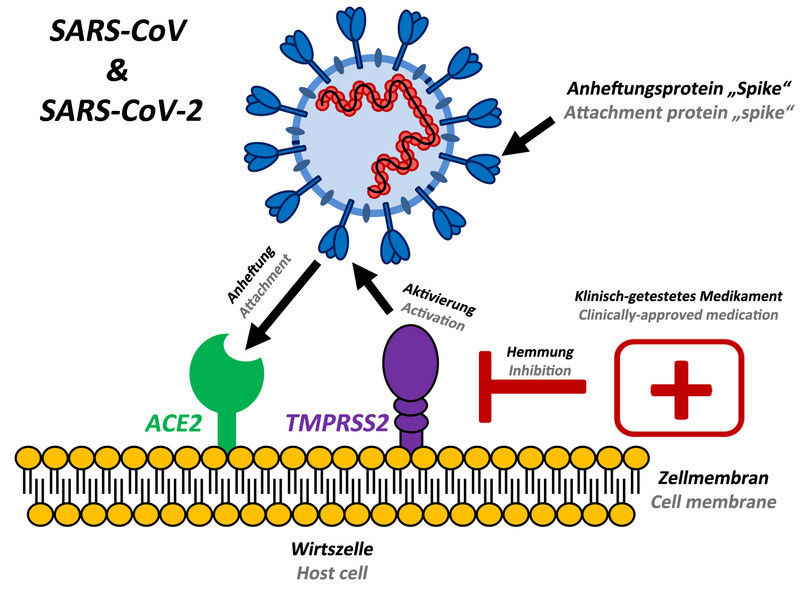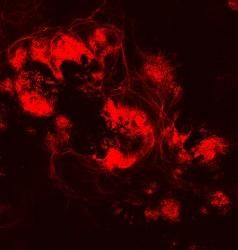Vital Curb for the Body´s Immune System
Reliable Marker for regulatory T cells found
Regulatory T cells are a key component for a controlled immune response to body-invading pathogens. If a patient has too few of them, the immune system can over-react and attack its own body tissues. In serious cases, this reaction can lead to auto-immune diseases, such as rheumatism, multiple sclerosis, or Type 1-diabetes. In an infected organism, it was so far nearly impossible to differentiate between regulatory T cells and other cells of the immune system. Therefore, it was very difficult to study these cells.
This could all change very soon. Scientists at the German Research Center for Biotechnology (GBF) in Braunschweig and the Hanover Medical School (MHH) have now discovered a characteristic feature for easily identifying regulatory T cells. This distinctive mark is a specific surface molecule, neuropilin-1.
Different subsets of T cells trigger very different processes within the body's immune system - from the destruction of infected body cells to the stimulation of other components of the immune system. The specialised sub-group of regulatory T cells has the task of suppressing the activities of other T cells to keep the body's immune responses from "going overboard". Researchers distinguish between the many types of T cells by so-called surface markers - molecular structures that appear only on one type of cell and are missing on all others.
In the past, there were no reliable markers for regulatory T cells. "They used to be identified by a surface molecule known as CD 25," explains GBF researcher, Dr. Dunja Bruder, "but when the immune system is active - in other words just when an organism is sick - other T cells also produce the CD 25 protein on their surfaces." A differentiation in this case is no longer feasible. By contrast, the neuropilin-1 protein, as GBF scientists have now discovered, is present solely on regulatory T cells and not on other activated immune cells. This was a surprising discovery, notes Dr. Bruder, "because until recently neuropilin-1 had only been found on nerve cells. What role it plays for the immune cells is still not known."
But even without knowing its function neuropilin-1 can be very useful as an identification marker. "With this help we can separate regulatory T cells from other immune cells and study them better," says GBF work group leader, Prof. Jan Buer. "Because regulatory T cells suppress immune responses we hope some day we will be able to control them. Perhaps with their help we can keep the immune system from rejecting a transplant or, on the other hand, stimulate an immune response to cancer growth."
Other news from the department science

Get the life science industry in your inbox
By submitting this form you agree that LUMITOS AG will send you the newsletter(s) selected above by email. Your data will not be passed on to third parties. Your data will be stored and processed in accordance with our data protection regulations. LUMITOS may contact you by email for the purpose of advertising or market and opinion surveys. You can revoke your consent at any time without giving reasons to LUMITOS AG, Ernst-Augustin-Str. 2, 12489 Berlin, Germany or by e-mail at revoke@lumitos.com with effect for the future. In addition, each email contains a link to unsubscribe from the corresponding newsletter.
More news from our other portals
Last viewed contents
Life's tiniest architects pinpointed by Yale researchers
Vogelbusch optimises important aspect of the bioethanol production from woody raw materials
Mayo Clinic researchers map prostate cancer relapse - By using C-11 choline PET and MRI
Researchers discover immunity genes that give frogs resistance to deadly fungus





















































